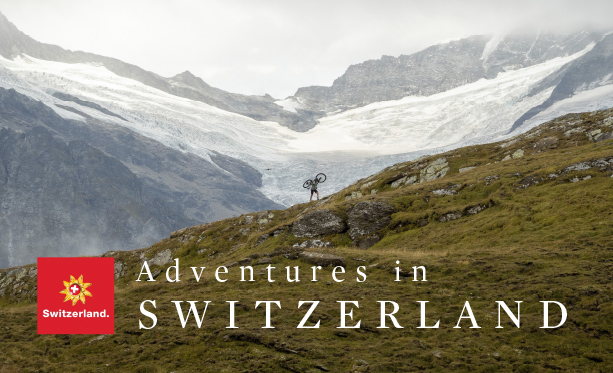Tamara Lunger: Mountain Warrior
From The Field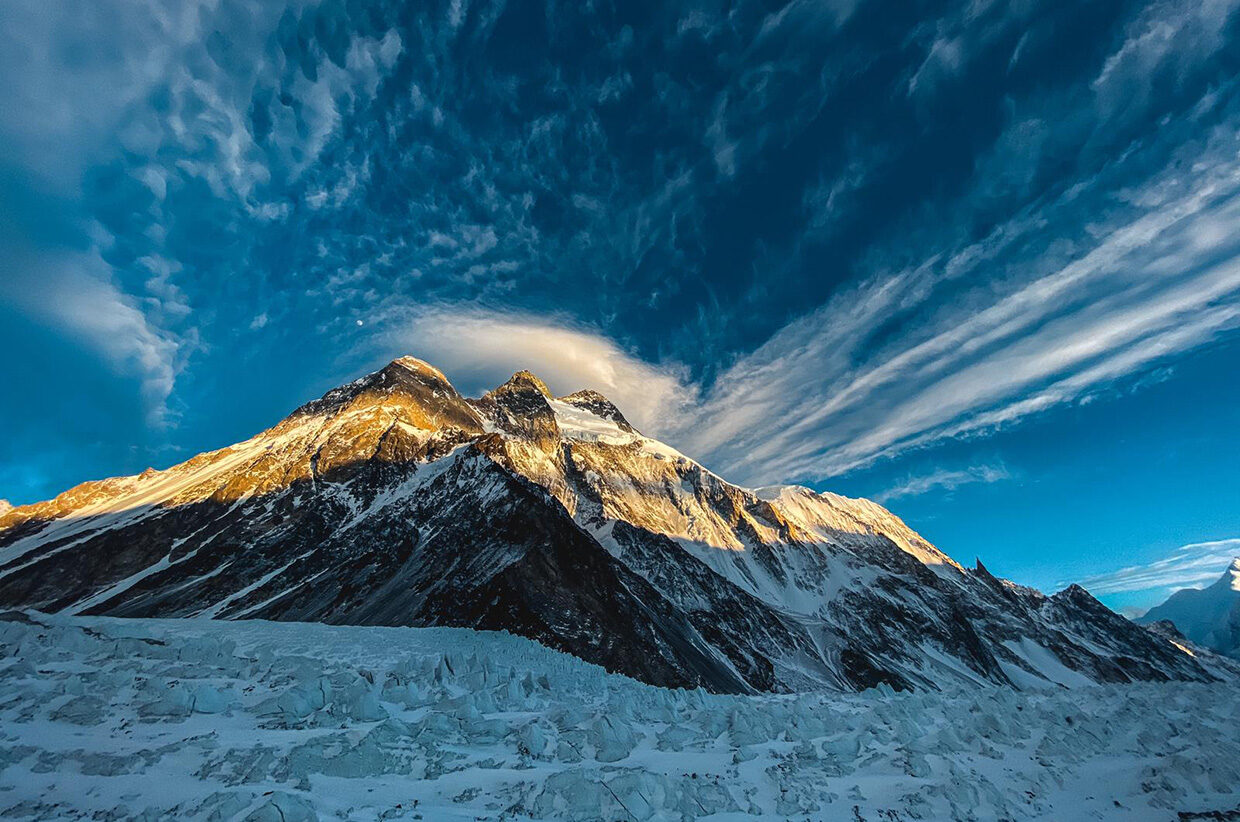
Written by Marta Manzoni // Photography by Tamara Lunger
‘A mountain is like love: it can be the most beautiful emotion of all but also the ugliest; when it hurts you, it hurts you a lot, but when the weather is nice, and it’s not so cold, you feel like a queen.’
—Tamara Lunger
Tamara Lunger has always chosen the most difficult path. As a child, she immediately understood that she had fallen in love with the mountains and was willing to endure their struggles. Combining an enthusiastic personality, exceptional talent, and extraordinary physical and mental endurance, the Italian mountaineer grew up in deep contact with nature, experiencing her passion as a way to find herself. In her adventures on the edge of the sky, she finds a balance and feels a deep spiritual connection with the mountains that give her joy.
At 23 she climbed her first 8,000er, becoming the youngest woman in history on the summit of Lhotse. In 2014 she reached the summit of K2 without oxygen, the second Italian woman to do so. The South Tyrolean is no stranger to the difficulties on the 8,000ers in winter. In 2016, while Simone Moro, Ali Sadpara, and Alex Txikon reached the 8,125m summit of Nanga Parbat during the historic first winter ascent, Tamara, fatigued, stopped 70m from the summit in order not to compromise her companions’ expedition. A year ago, on the Gasherbrum massif, she saved the life of her climbing partner Simone Moro, who fell into a crevasse and sustained several injuries to her hand. This year she returned to the ‘Mountain of the Italians’ to attempt an exceptional feat: the first winter ascent of K2 in history. After the extraordinary success of the 10 Nepali mountaineers who reached the summit, the other attempts to climb the second-highest mountain on Earth in winter were a succession of tragedies. Following the Catalan mountaineer Sergi Mingote’s fall from the Abruzzi Spur, Atanas Skatov, Muhammad Ali Sadpara, John Snorri Sigurjónsson, and Juan Pablo ‘JP’ Mohr also died.
These losses pushed Tamara Lunger to question both herself and mountaineering. For now, what happened requires a halt to her winter attempts on Earth’s giants.
Sidetracked: On K2 you lived both the joy for the Nepali company’s success and the tragic loss of your teammates. How are you?
Tamara Lunger: I’m taking time to think. I need to be at peace, cry when I need to. Now is the moment to give myself time. At first, I thought it would be a successful expedition – we were sure to reach the top. Then it all turned into a nightmare. K2, after the Nepali victory, told me and all the other climbers that our place was not there. I felt that we weren’t welcome – the mountain didn’t want us. I’ve been meditating a lot about what happened: why did those five people die and not others? Why am I still alive? I don’t know how long it will take me to recover or what will happen in my future. When these things happen I always have so many question marks, and I have to find the answers.
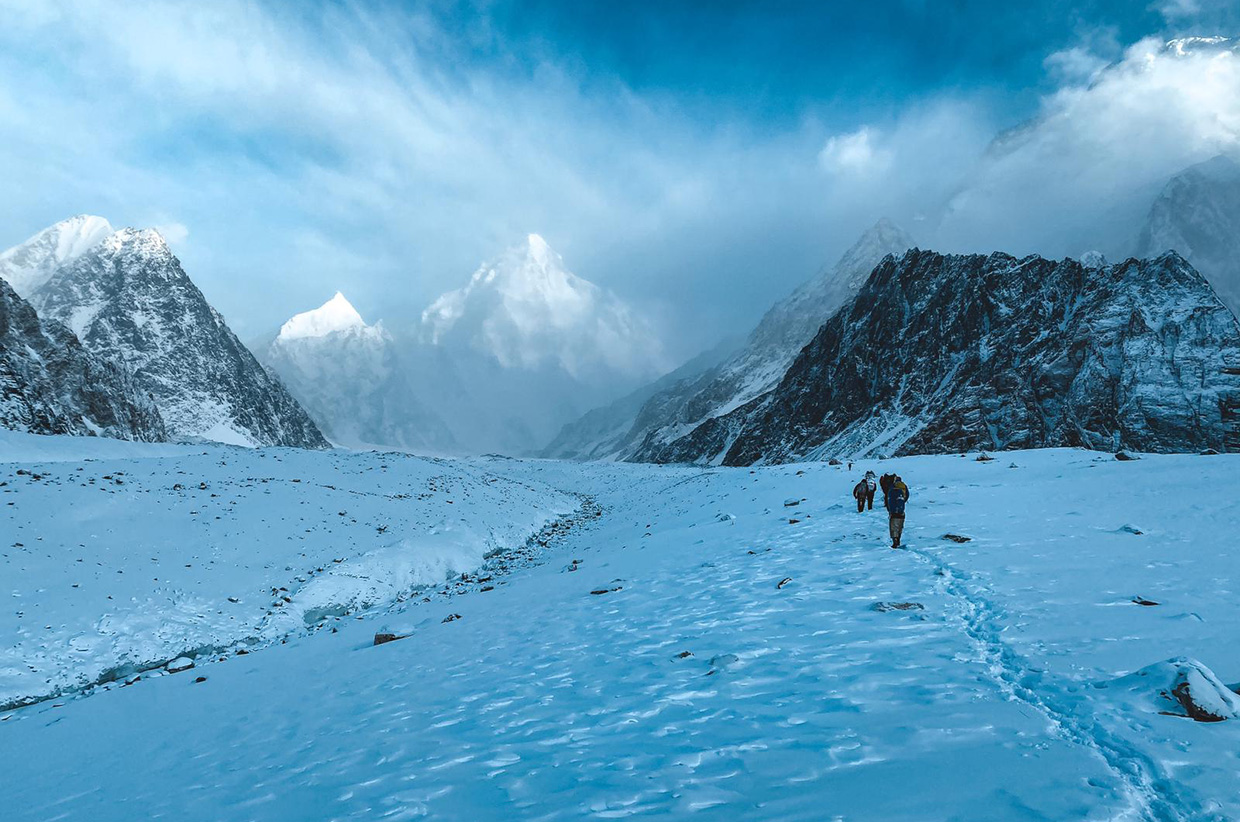


Relations with the Romanian mountaineer Alex Gavan, who was your climbing partner at the beginning of the expedition, have not always been easy. What went wrong?
We had two incompatible personalities and a different outlook on life. He even felt in competition with me. He also walked at night in the dark, making me worry. We fought a lot, and I knew that I needed all my energy to climb, so I told him it would be better for each of us to continue on our own. Then, after the death of Sergi Mingote, he gave up the climb.
What do you think of the 10 Nepali climbers who made the first winter ascent of K2? It seemed the success of a people rather than any single mountaineer.
I’m really happy for them – they deserved it. We all had a toast together and I was proud of them. It was time for the Nepali to have their own success in the mountains, no longer just porters. It was a very powerful message; they were really strong. There was bad weather before they tried for the top, and at Camp 2 the wind blew away their equipment – they lost all their tents and sleeping bags. So, they also had to carry everything up again. They achieved an important feat: together, well coordinated, with a beautiful harmony. It was really emotional for me, an immense joy. This was how it should be. And it’s thanks to them that the other climbers were able to try the summit, because they equipped the route with fixed ropes, without which it’s impossible to attempt the summit of K2 in winter. The celebration, however, had lost some of its value for me, because on the same day as their success I saw Sergi Mingote die.
You saw the mountaineer Sergi Mingote fall in front of your eyes. Are you ready to talk about it?
I was getting some sun near the tent at Advanced Base Camp when I heard screams. I looked up and saw something falling off the mountain, doing somersaults, and immediately thought: Oh my God that’s a person! It’s a person! He fell just 40m away from me. I was really worried, thinking about what I could expect, what I would see. I didn’t know what condition we would find him in, if he would still be alive. In those 40m a thousand different thoughts went through my mind – so many emotions. My heart was pounding and my breath was shallow. We didn’t know who it was. When we found Sergi he was still breathing but he was broken, his legs shifted due to fractures and his head down a crack.
‘At that point I finally started crying and slowly letting go, even though I kept thinking about it. That experience made me feel first-hand how dangerous K2 can be. Sergi had been like a father to me.’
We still don’t know how he fell. We didn’t want to move him because if we got something wrong we could have killed him. Slowly the others arrived, first of all JP, who ran down the mountain like a missile. Meanwhile, we tried to contact rescue. We covered him and tried to talk to him. Then, after an hour and 15 minutes, he stopped breathing and we turned him over. And in that moment, I understood that I wanted to do anything to help and give my all. I looked Sergi in the face and I wasn’t even able to cry – I was in shock.
When the doctor arrived, he said that it would have been hopeless even if the helicopter had been faster. The next day I got all his things ready, packed his bags, and then they came to pick him up by helicopter. At that point I finally started crying and slowly letting go, even though I kept thinking about it. That experience made me feel first-hand how dangerous K2 can be. Sergi had been like a father to me.
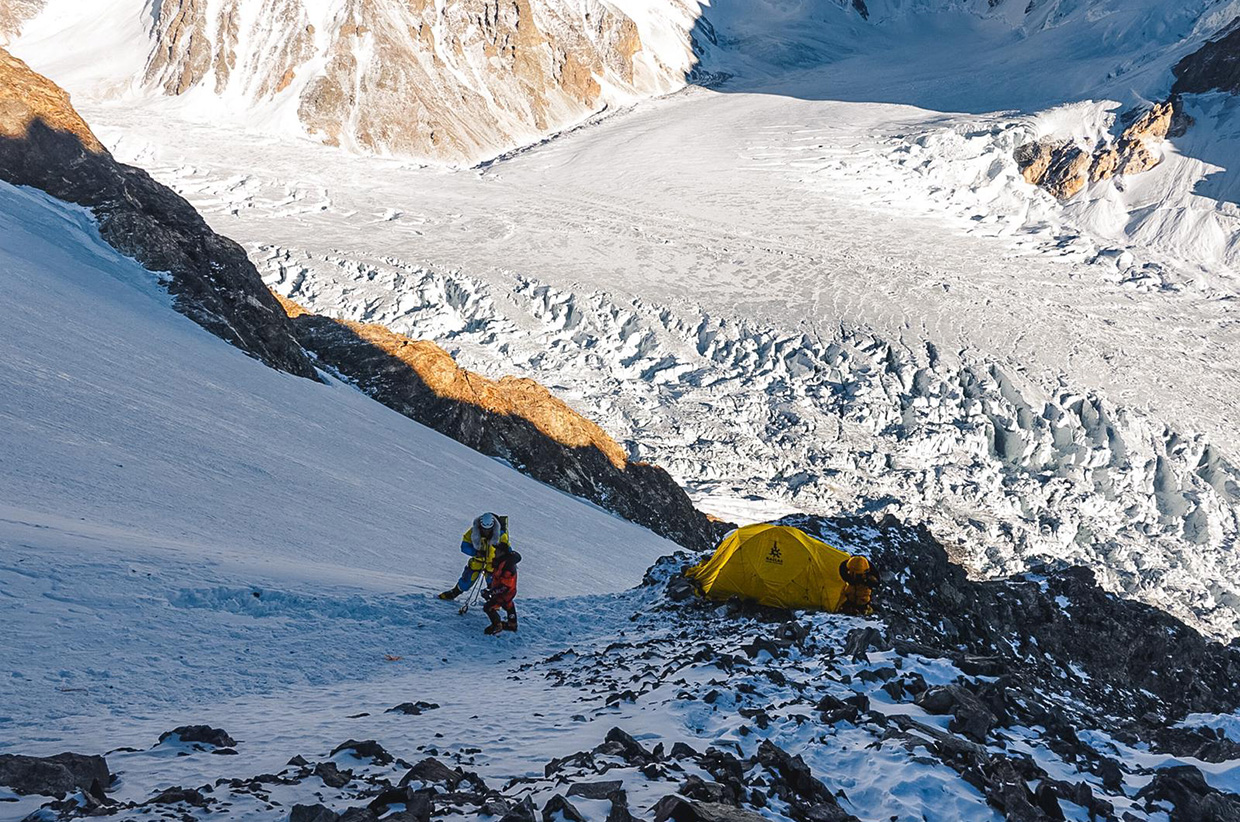
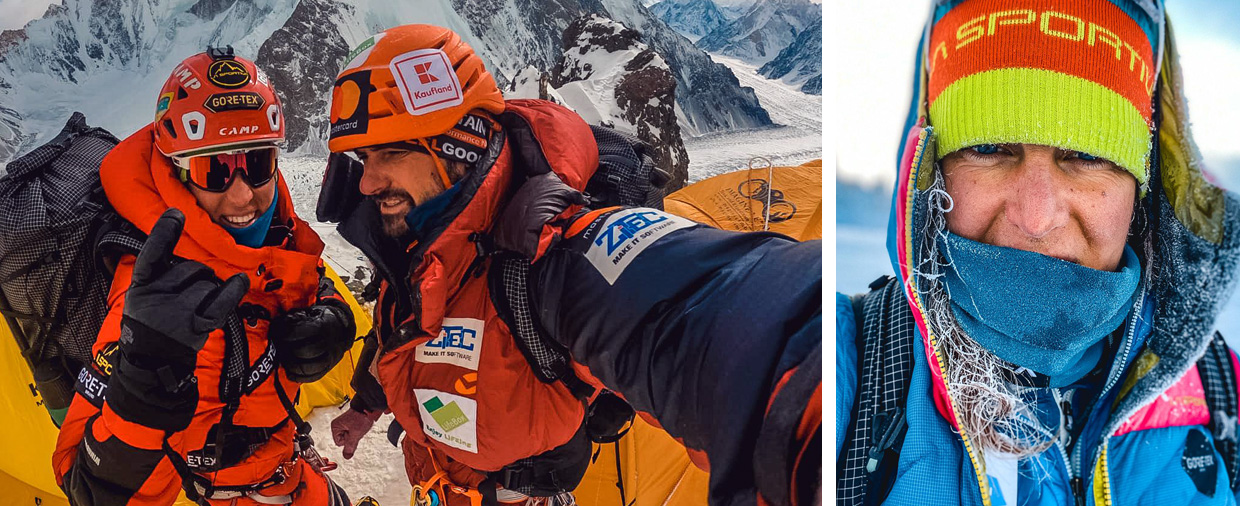
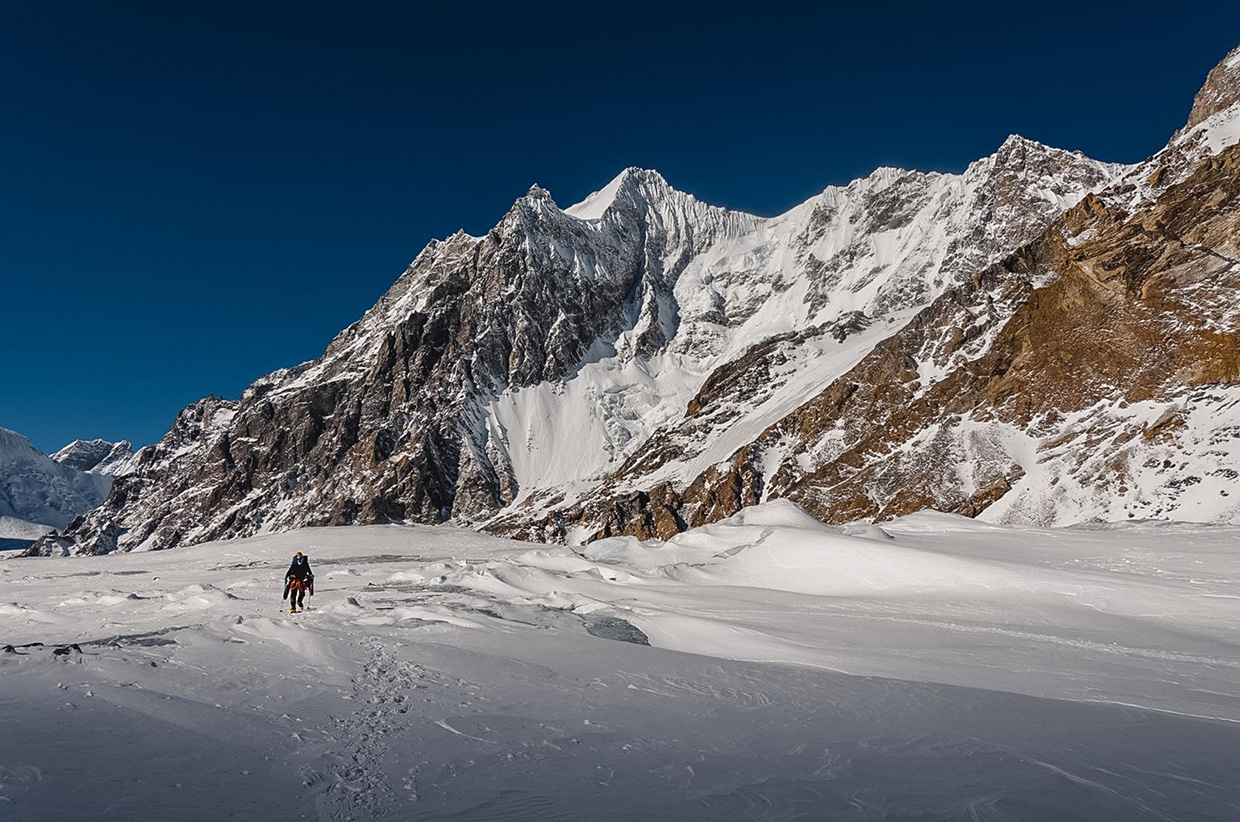
At that point, however, you decided to stay on K2, while other climbers returned home. Why did you make this choice?
Alex Gavan, my climbing partner, immediately decided to descend and leave. I knew that I had to give myself some time to process what had happened, and that it wouldn’t be a good idea to leave. I had to allow space for my emotions. My parents had never been so worried, and they asked me several times to come back. Then, I saw the birth of new projects and a new enthusiasm, and I got involved with the Pakistani Muhammad Ali Sadpara, our expedition partner on Nanga Parbat, the Chilean Juan Pablo ‘JP’ Mohr, and the Icelandic John Snorri Sigurjónsson, who designed a new attempt to the top.
Before setting out, however, I had stomach problems; I wasn’t at my best and I knew I wouldn’t be able to attempt the summit. I stayed in a corner in the tent at Camp 3 so as not to disturb the preparations of the other three, then I saw them leave in the dark. On February 5th I waited hours for news, but nothing came. So, after leaving a stove and some food ready for Juan Pablo, I decided to descend.
Would you like to tell us more about Juan Pablo?
In my mind, it simply wasn’t possible that he wouldn’t make it back. When we got lost on our way down from Camp 3 we saw a light behind us and I was sure it was JP. We yelled towards that light but later found out it was a Sherpa. That evening we learned that they hadn’t returned to the last camp, and, in that moment, I already thought that two nights outdoors in those temperatures were extreme. I was very tired but I went to sleep thinking that the next day I would see them, and I prayed for them. When we didn’t hear from them again in the morning, I prayed again, and sent positive energy towards the mountain. I went to bed hoping to see them the next day.
When I got up, however, there was no news and I realised that it was over. It was the worst day. I cried the whole time, and I called home, my best friend, and Simone Moro. I felt so weak; it seemed like something had died inside of me too. At Base Camp they were all sad. The cooks all had swollen eyes and tried to comfort me, which was nice because there was a lot of solidarity between everyone in trying to deal with that tragic moment. I thought: K2, what are you doing? With JP I had really found a soulmate: we immediately understood each other, we gave each other strength, we needed each other deeply, we were always together, we talked so much, cried, laughed. We helped each other a lot. His death broke my heart.
‘The mountain is everything: it can be the greatest joy in life, and half an hour later take it all away.’
What were the main difficulties during the winter expedition on K2?
Walking in the dark. Before leaving, I had decided that I would only do it in a true emergency. Your hands are much more likely to freeze when you set up your tent in the dark, and maybe it’s windy. I had to protect myself from the cold, trying to avoid mistakes that could have been fatal, such as losing gloves: at that point your expedition is over. Conditions are different from in summer when there is a lot more snow. Everything is frozen in winter; you always walk with crampons, and the physical effort that the body has to bear is considerable. In addition, large rocks often fell from above. One of these boulders hit a mountaineer on the head, breaking his helmet – the bone was visible. I always had to be very focused.
How did you sleep at night?
During this expedition I slept quite well, unlike the other times. At Base Camp, which was at 6,000m, inside the tents it was -45˚C, all our mattresses had holes in them, and we only had a layer of tent between us and the ice. At Camp 3 (7,400m) I used two sleeping bags rated for -40˚C and was in my high-altitude suit and I was still so cold.
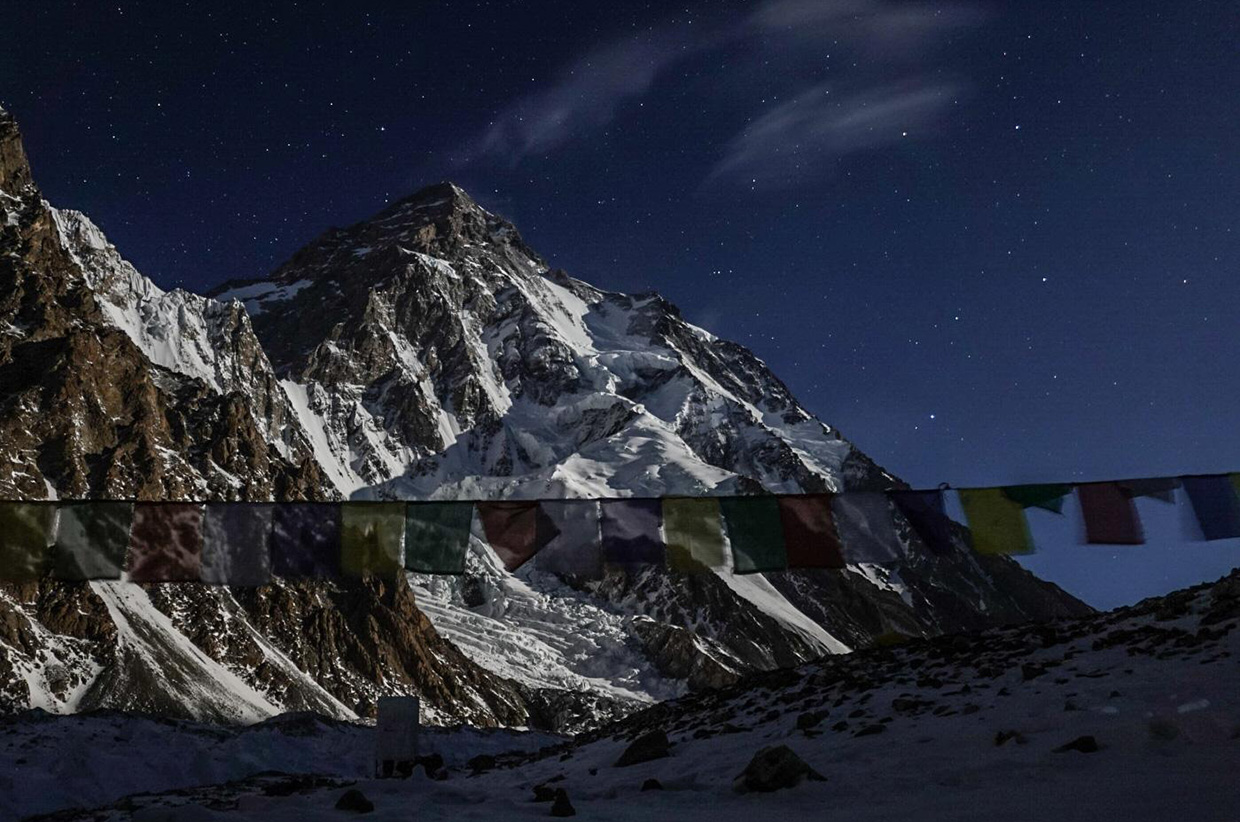
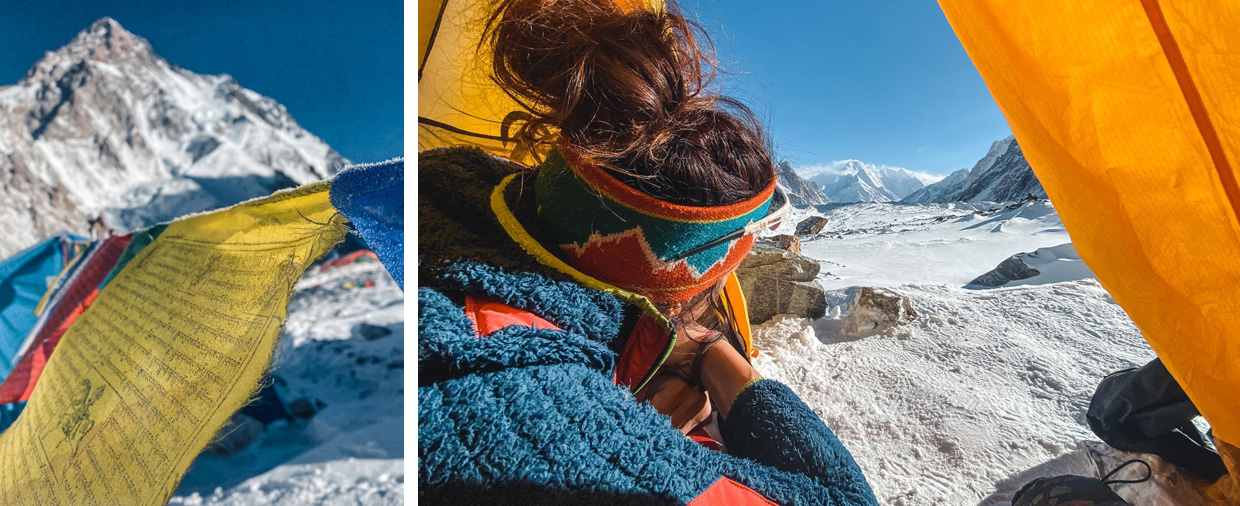
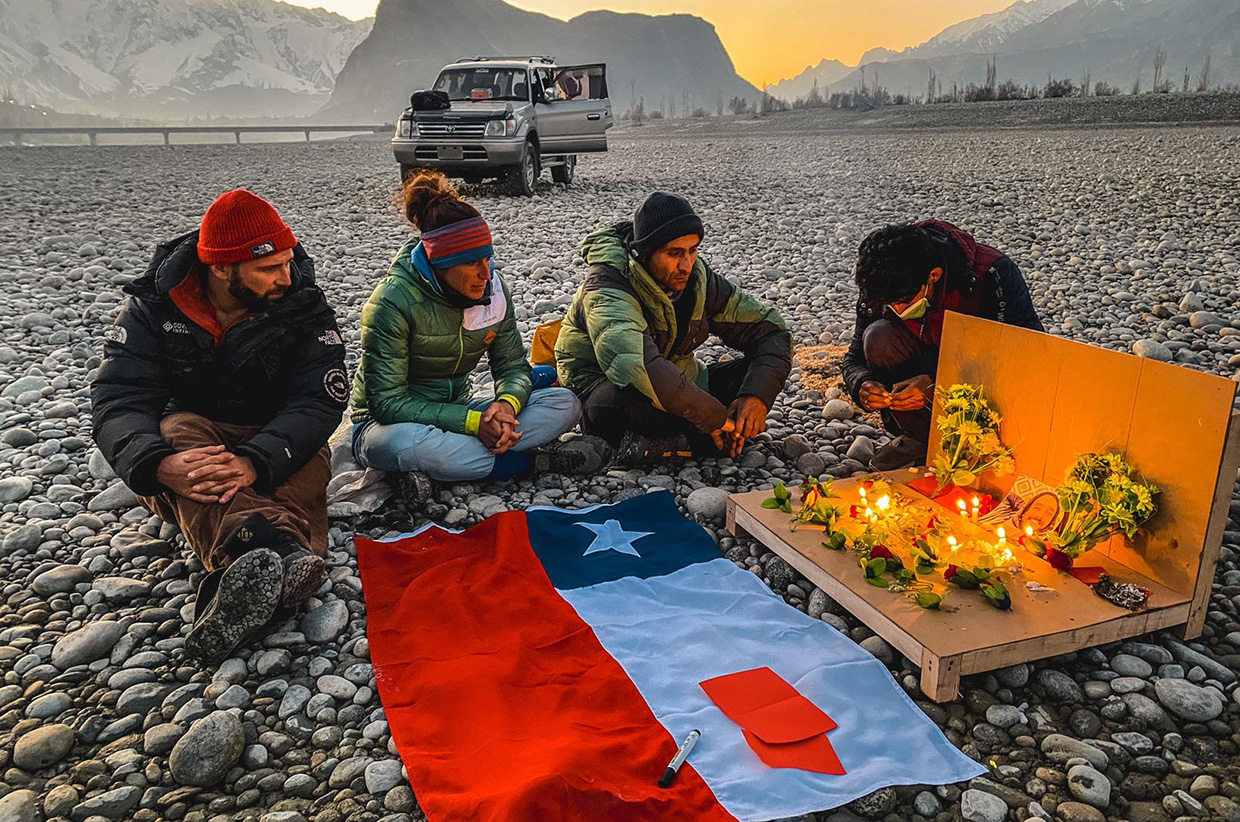
How does a typical day go during a winter expedition on K2?
You get up with the sun, otherwise it’s too cold. We have breakfast then pack and take the tent apart. You leave at 8.00am and arrive around 2.00pm, walking with a backpack weighing about 20kg. Put up the tent, then stay outside for a while to sunbathe. When it gets dark you immediately enter the tent. First, I change my socks and get into the sleeping bag and try to rest. Then we eat, drink a little, chat.
How did you train to face K2 in winter?
I worked more on my mind than on my body. During lockdown I did yoga and a mindfulness course, in which I meditated a lot on my desire to climb K2 in winter. I wanted to understand what it meant to me: it had to be something that came from the heart, not simply proving to others that Tamara Lunger went to K2 in winter. And K2 kept looking for me every day. It gave me goosebumps and occasionally made me cry. So, I decided to go, and, from that moment on, I found peace. On the expedition I saw several people who were not adequately prepared both mentally and physically, and sometimes even I didn’t feel fit enough. It was truly very hard.
The statement ‘if you’re a mountaineer you go looking for it’ is still often heard. What do you think?
The mountain is everything: it can be the greatest joy in life, and half an hour later take it all away. I was very aware that winter K2 would be the most difficult expedition of my life and it could be dangerous. I’m mindful that it can go wrong, but when friends die it’s always awful. I have to be honest, though: I know that I look for intense moments in the mountains that give me lessons for the future. I also learned a lot from this last expedition. I faced many situations, and in the end, setting foot at the top of the mountain was no longer my priority.
To learn more about Tamara and her expeditions, visit tamaralunger.com and find her on Instagram @tamaralunger.
Written by Marta Manzoni // @_marta_manzoni. Photography: Tamara Lunger Archive.




